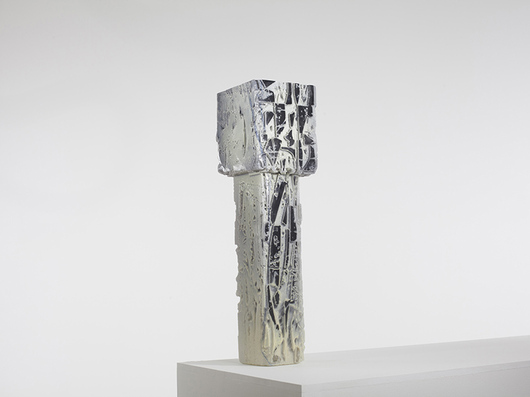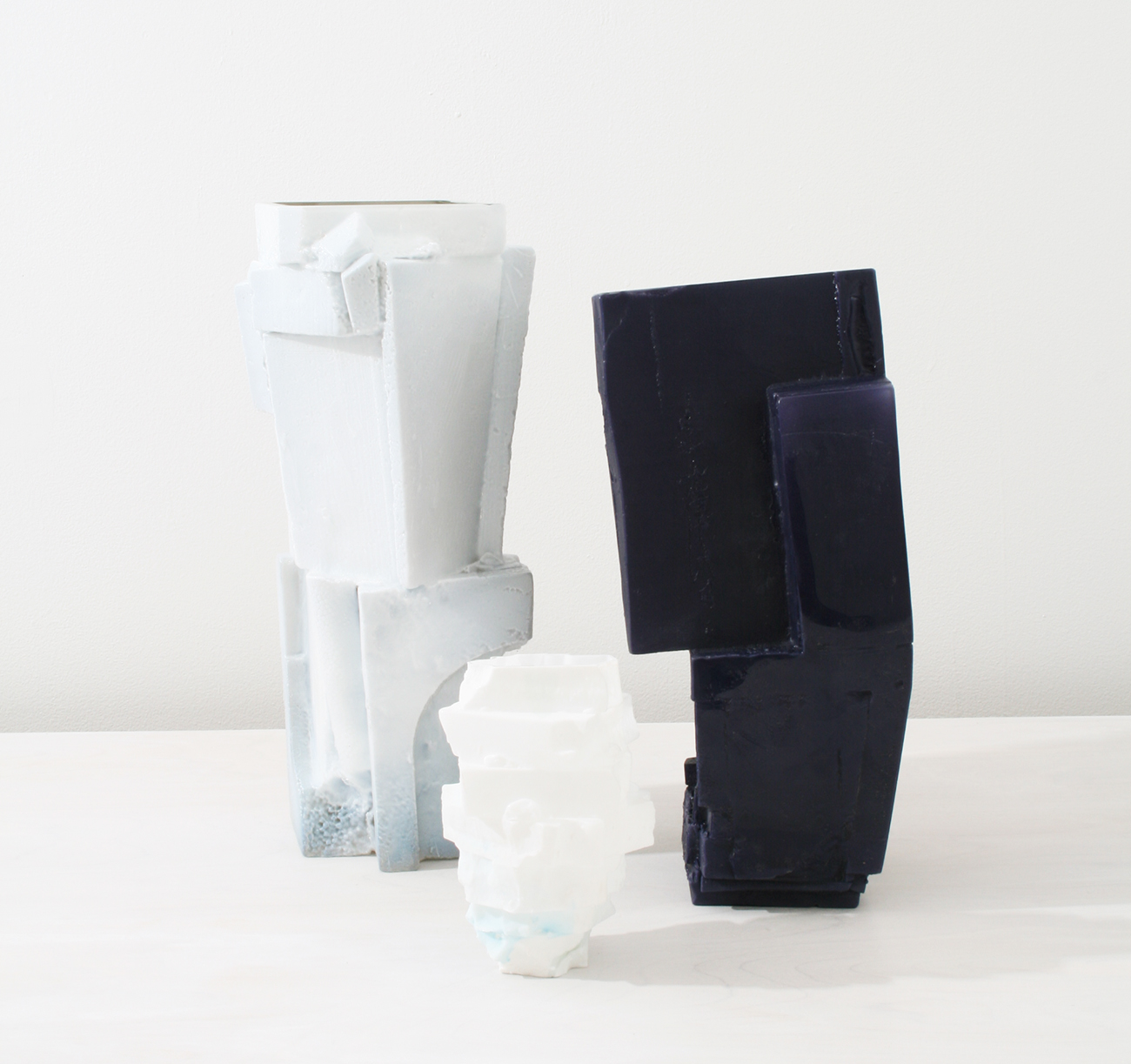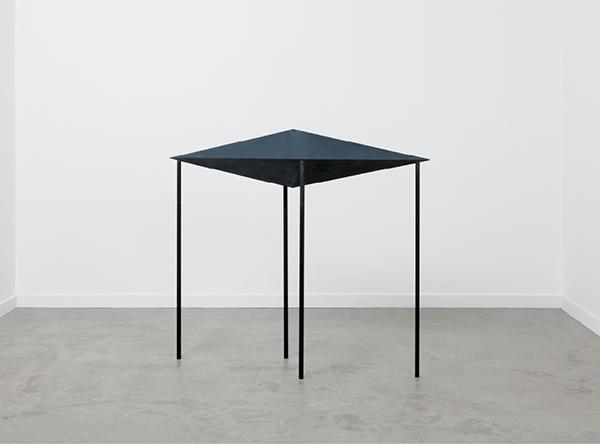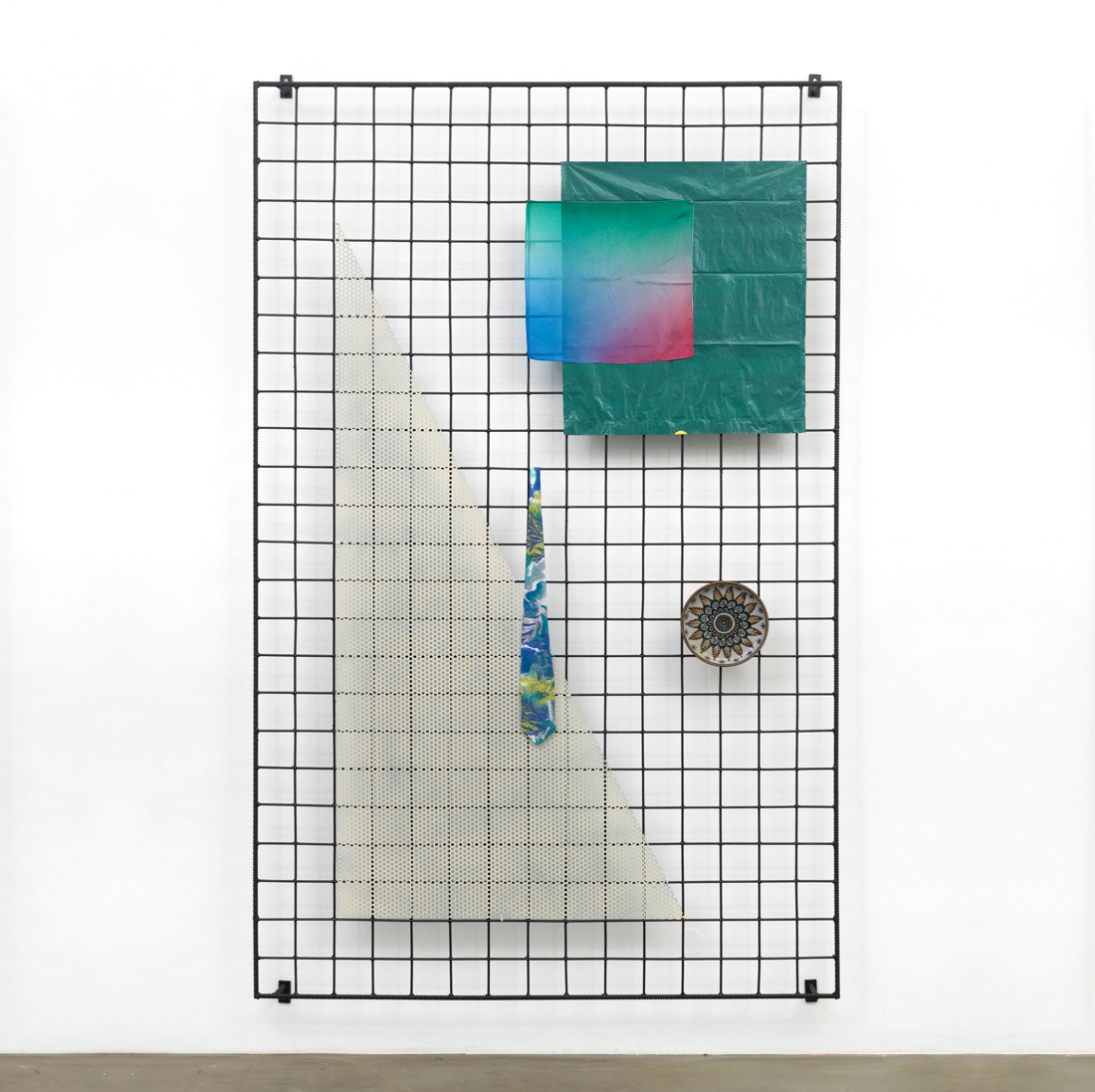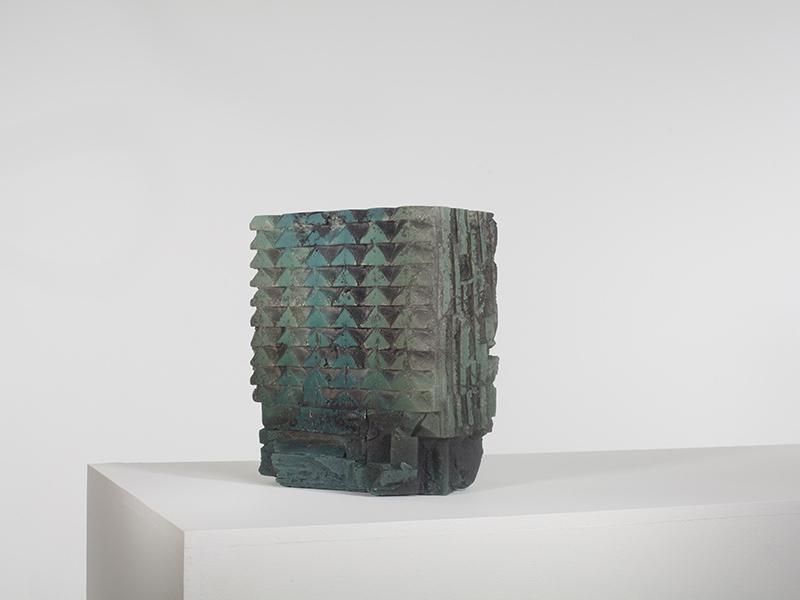
01.31.14
Excerpt: Exhibition
Thaddeus Wolfe: Unsurfacing at Volume Gallery
Thaddeus Wolfe‘s Assemblage vases looked mysterious enough when he debuted them in 2011, first for sale with Matter and then with a special edition for Chicago’s Volume Gallery — we’d never seen glass before that paired the shape and surface texture of rocks and minerals with amazing fades of opaque color. When we asked him to describe his process to us, it turned out that it was relatively easy to grasp, if not execute: He blew the vessels into faceted plaster-and-silicone molds. His newest take on the series — the Unsurfacing collection for Volume, on view as of tonight — looks even more complicated, layered with fragmented geometric patterns and contrasting colors.
To achieve it, Wolfe experimented with adding a new layer to his methodology, carving the patterns into the surface of the foam used to make his molds, then selectively planing down the contours of the finished piece to reveal varying levels of color. “It’s something I’ve done in past works, like my Faceted Assemblages, but those were more random patterns just made from sticking many different things together to build a mold,” Wolfe explains. “These are more thought through, as little canvases almost.” Fittingly, Volume founders Sam Vinz and Claire Warner invited New York artist Jim Oliveira to interview Wolfe for the show’s catalog. We’ve excerpted part of their conversation below for your enjoyment.
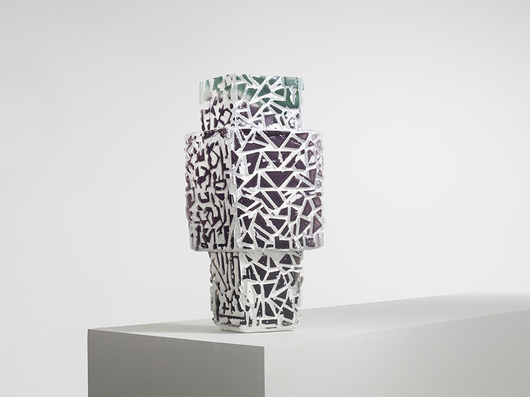
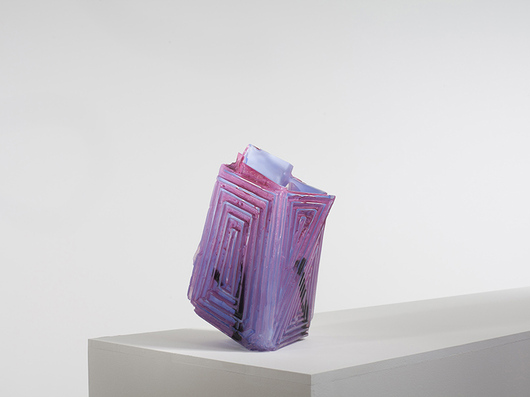
Q+A by Jim Oliveira
Thaddeus, I’d like to ask you a very basic question to get started: How did you first become interested is glass as a medium?
I used to take Saturday art classes at the Toledo Museum of Art when I was in grade school. That was the first I became aware of blowing glass. There was a studio there, which I don’t remember going into much, but I remember being interested, and knowing it was something I wanted to try. The first time I ever saw glassblowing was as a kid at an amusement park. I can still remember what it looked like — orange gobs of glass being rolled and shaped on a metal table. It was pretty mysterious but intriguing. So finally in college, when I had an elective, I chose glass, to satisfy my curiosity with it, and of course I kept doing it.
Do you feel that glass has some quality or qualities which are able to express your intentions better than, say, clay or steel?
Glass as a material is very special due to its inherent optical possibilities. It can be transparent, translucent or opaque. I think my more successful pieces utilize a combination of these qualities. It is also interesting for me that blown pieces are built up in layers. This allows for layering of various colors together. Cutting through the different color layers has become essential to much of the new work I am making.
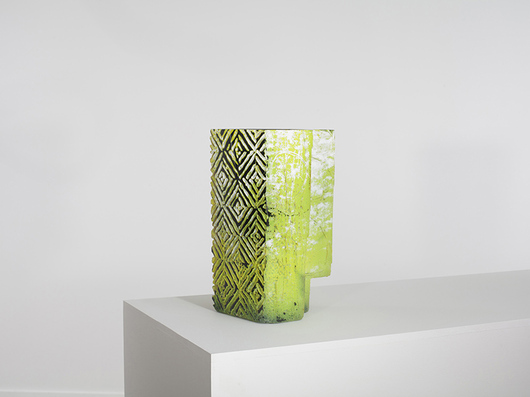
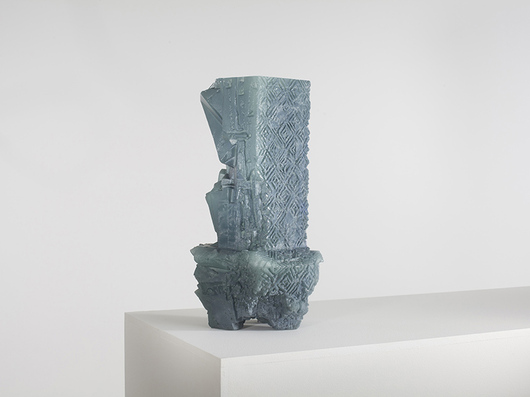
Speaking of your new work, it seems to me that, up until now, much of your inspiration has come from rock formations, crystalline structures and geology. Your new work seems to be taking painting and architecture into greater consideration. Is there something specific that inspired this new direction?
Nothing too specific. The ideas in these pieces had seeds in previous ones. Only now I’ve expanded them over entire surfaces and emphasized them with contrasting colors. The forms of certain pieces have become more reductive in order to exhibit these surfaces — so in that sense the overall forms are more referential to architecture. The pattern ideas were influenced by Op-Art painting. And making certain surfaces of the pieces become a type of canvas for imagery. My intention however, was to give the appearance that this pattern imagery had been distorted or defaced from their ideal forms.”
That’s interesting to me, the idea of creating a reference to a visual pattern and then breaking or “defacing” it. It’s kind of the opposite of what I was going to ask you next which is, do you intentionally incorporate mistakes or un-looked-for-results into your work.
I do incorporate mistakes into the initial forms before I make a mold of them. The process of making the forms can involve destroying and rebuilding parts of it. There are also a lot of unintended or unexpected things that happen in the glassblowing process which I can’t control, especially with the color. There were a lot of unintended things that happened in earlier pieces which are now techniques. Even the idea of grinding through the layers of color came from mistakenly doing that to some early pieces.
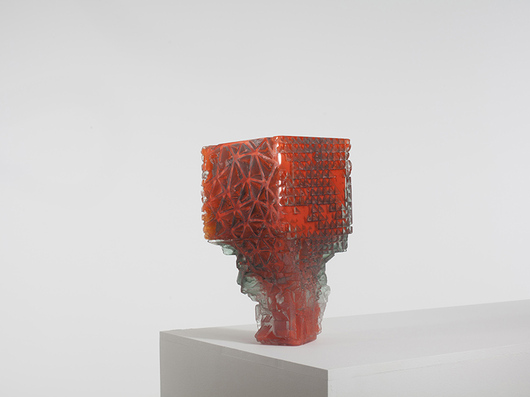
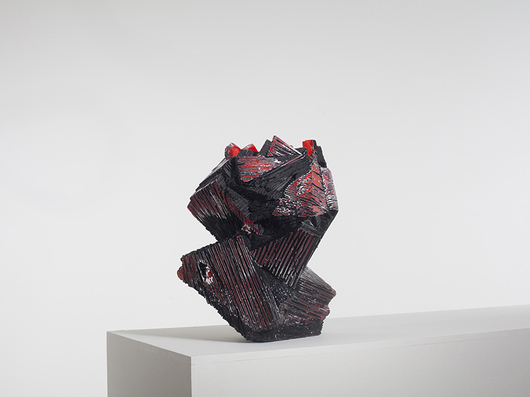
You mentioned earlier that the new work was somewhat influenced by Op-Art. Who are your favorite artists and designers? Are there particular periods or styles of art or design that you’re especially into? And how about glass traditions from around the world? Is there any particular artistic or design lineage that you feel connected to?
As for glass, I am interested in a lot if the pieces produced in the Czech Republic of the 20th century. I especially like the designs of people like Frantisek Vizner, Vaclav Cigler, Karl Wunsch and early pieces by the Libenskys. A lot of these were decorative vessels, but they were extraordinary in some of the very expressionistic techniques and surface treatments such as rough untraditional engraving and lush-colored enamel painting.
After I realized some of my work had associations with Art Deco, I looked back into that movement. I love the lamps of Pierre Chareau — someone I was unaware of until recently, but whose pieces had a similar angular disjointedness that I was looking for in my own work. I also admire the work of Hector Guimard for an amazing reductive, stylized take on natural forms. I look to a lot of other art, painting and sculpture throughout all time periods for inspiration. With the op art painting, I especially like that of Richard Anuszkiewicz, for its elegant weirdness and subtle color gradients, which are visually amazing and complex.
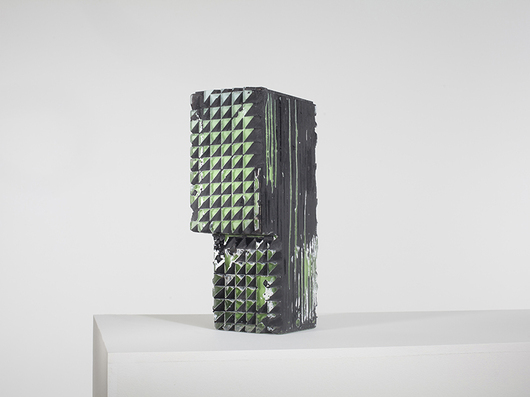
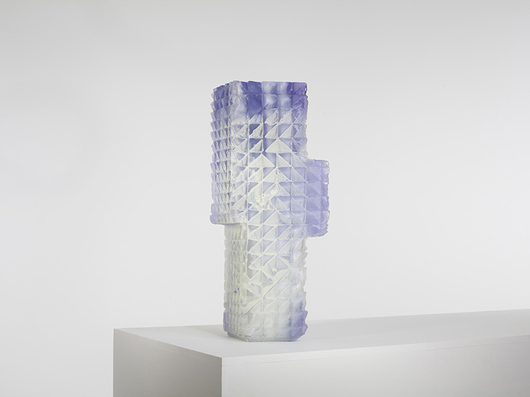
The first piece of your work that I ever encountered was a little black assemblage vase that I saw in a shop/gallery in Manhattan, and picking it up I thought, “Wow, whoever made this is doing something new and cool with glass.” But there was also something I couldn’t quite explain about the way it looked and felt in my hands. A little bit of the numinous. That’s what art does for me. Where do you see your work going in the future.
That’s cool that you saw my work at that early point. I’m sure that was one of the first assemblage pieces I had ever made. I always wanted them to have a deep effect on the viewer. A combination of visual and tactical sensations, where you are not quite sure what it is you are viewing, but it’s surfaces draw you in and make you want to figure it out. I’ve also thought of these objects as things you can look at over and over and never really know. There’s always another side or texture or detail you could notice even after having been with it for some time.
I’m excited for the future work. I think they are a number of ideas from this show which I would like to expand on, namely the patterns and textured surface designs. I have a ton of ideas for other pieces using solid cast glass, which I hope to start on after this show. Also, I’m finally setting up my own shop in Brooklyn for grinding, polishing and other finishing work. This will really open up a lot of new possibilities for experimenting with different techniques that should lead me into new directions.
That all makes sense to me. After seeing some of your new work, I don’t know if “breakthrough” is the right word, but it’s obvious that your making a leap forward. The bold colors, patterning and surface cutting and scarification all seem to be adding another dimension. It’s exciting stuff, and I’m really looking forward to this show at Volume.
Thanks. I’m excited about it too. I think with the way that I work, there aren’t really ‘breakthroughs,’ but more of a long steady progression and development of these ideas and forms. The nature of the process of making these can be so slow that it slows the output, but it allows the ideas to gestate before the pieces can actually be made. This is good in a way because it means that I still have a lot of things I want to try, but haven’t had time to get to. But the goal is that by the time I do get to those ideas, I will have changed and grown to a point that they can be that much richer.
